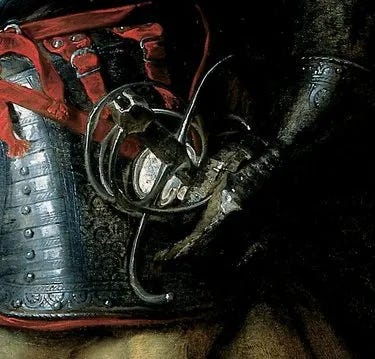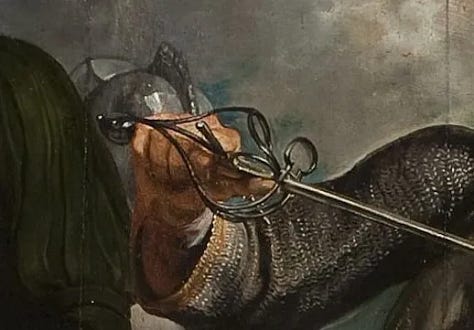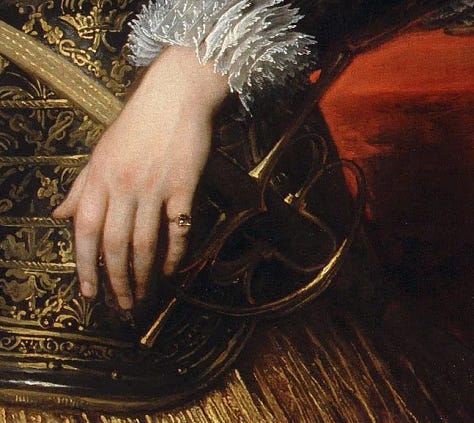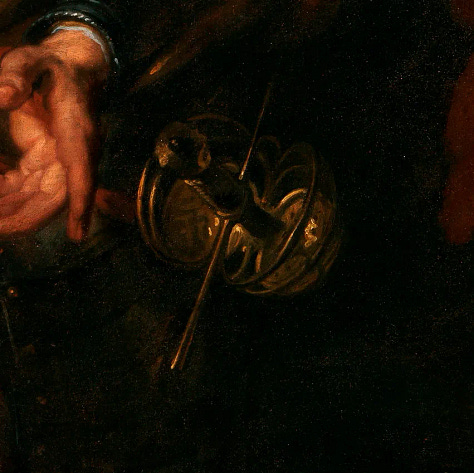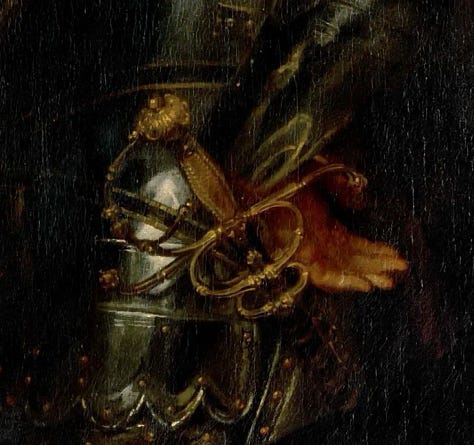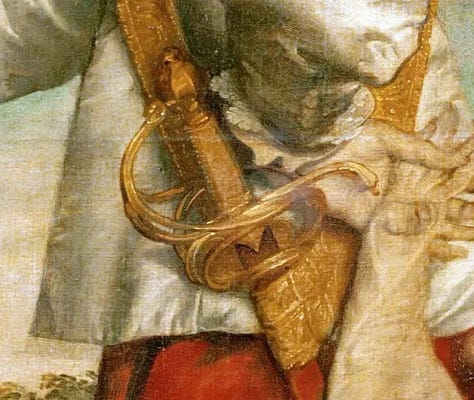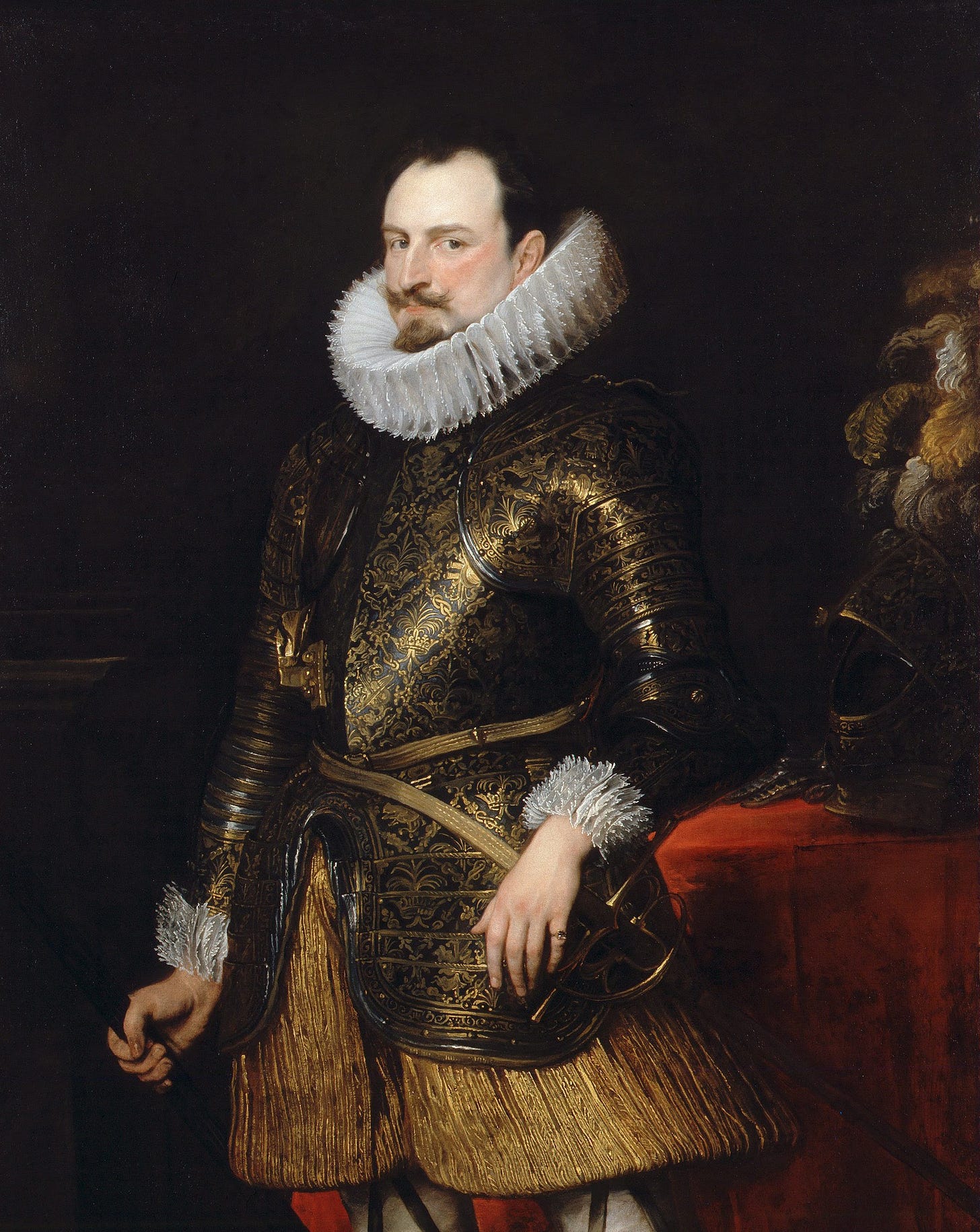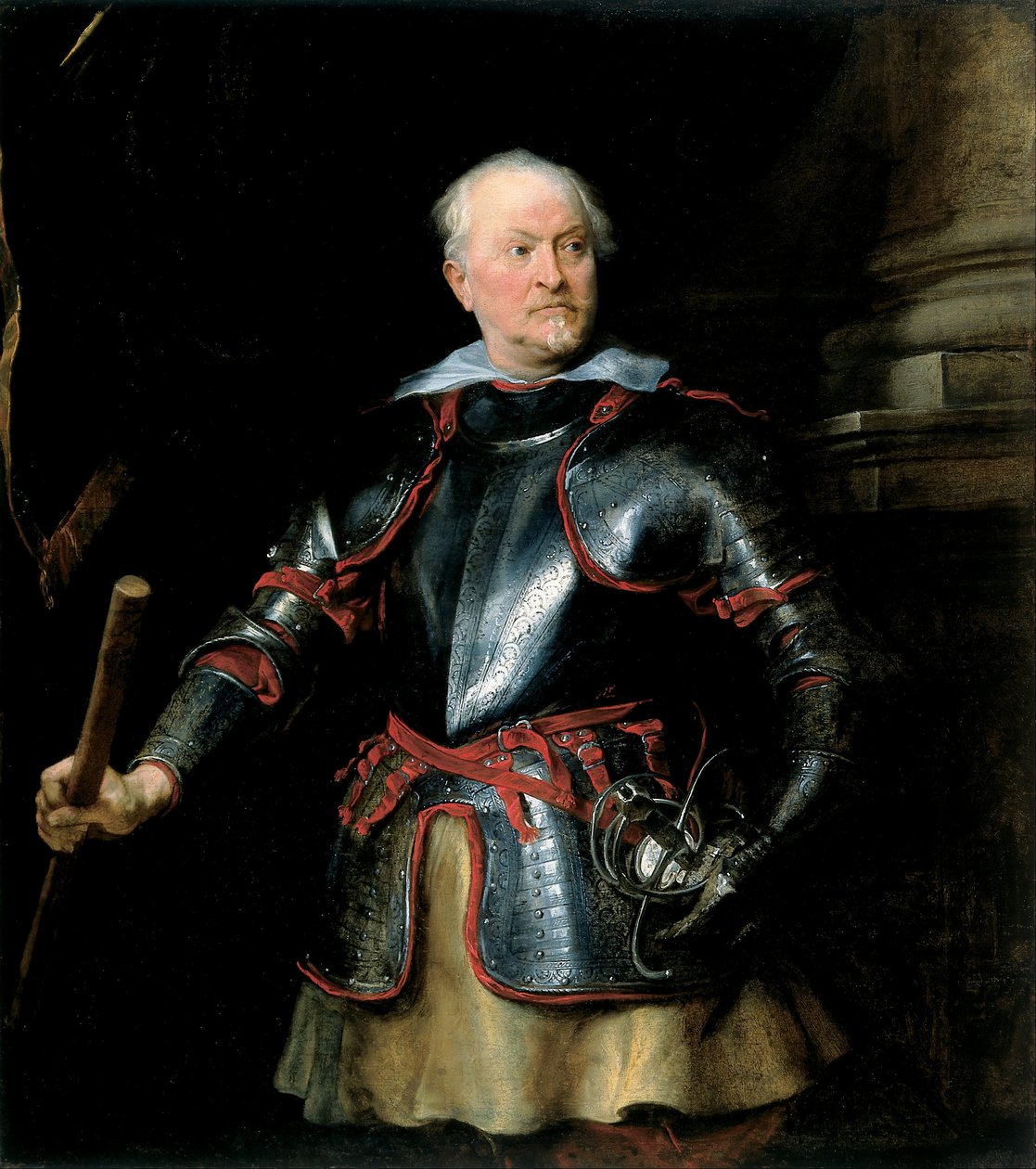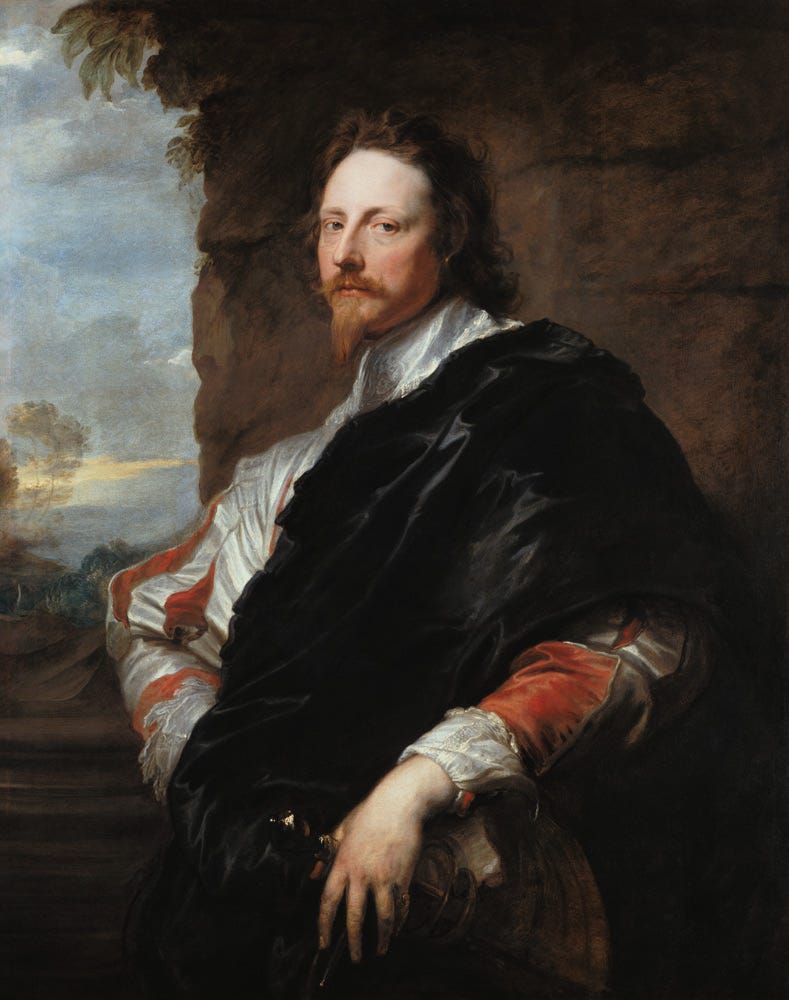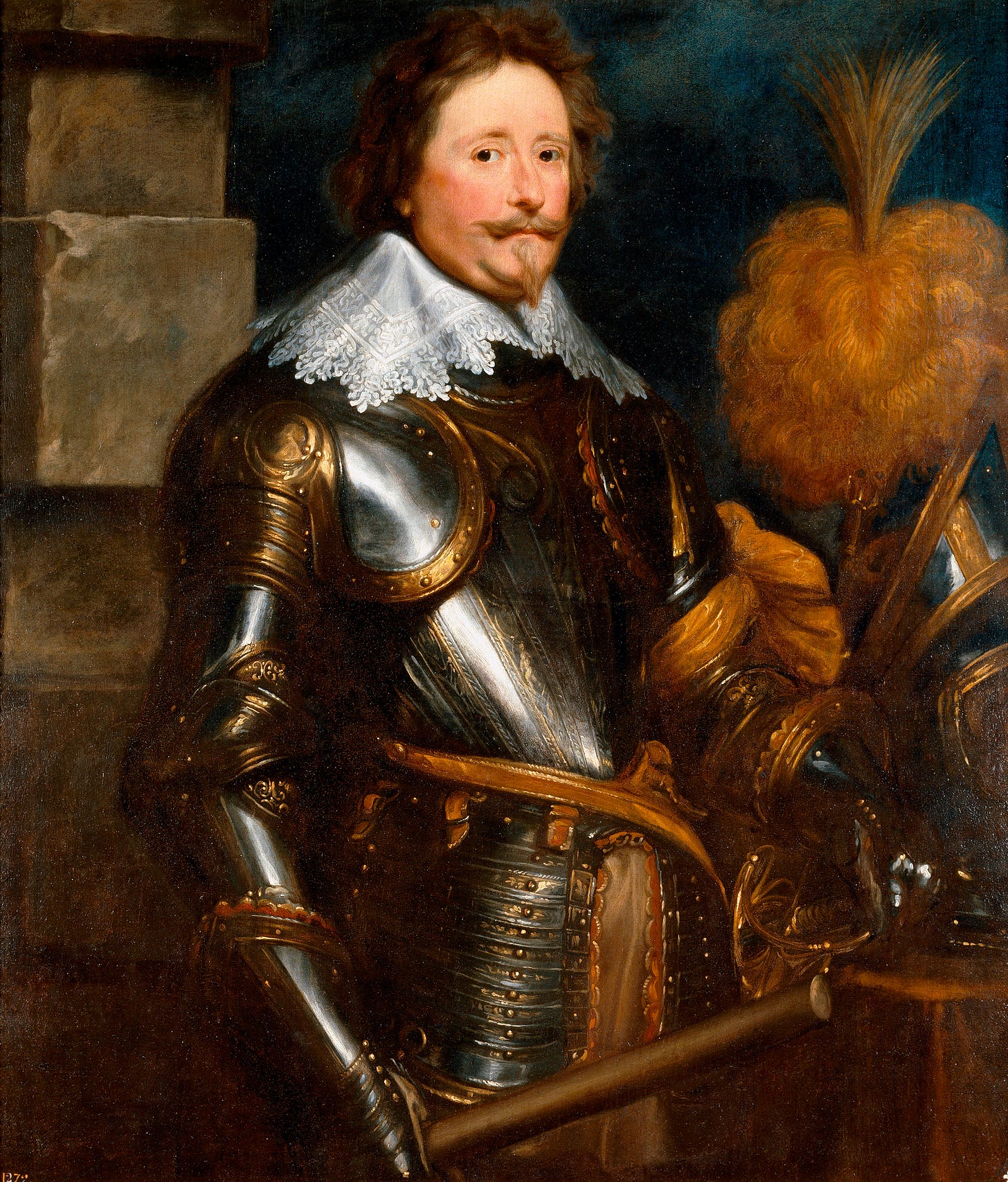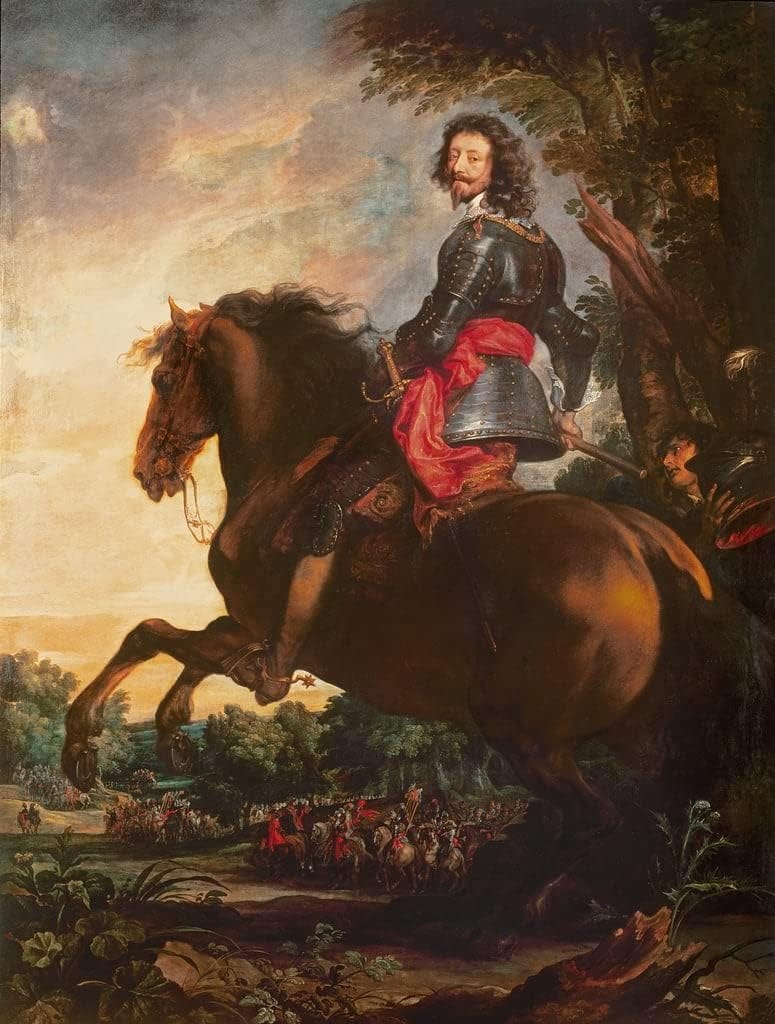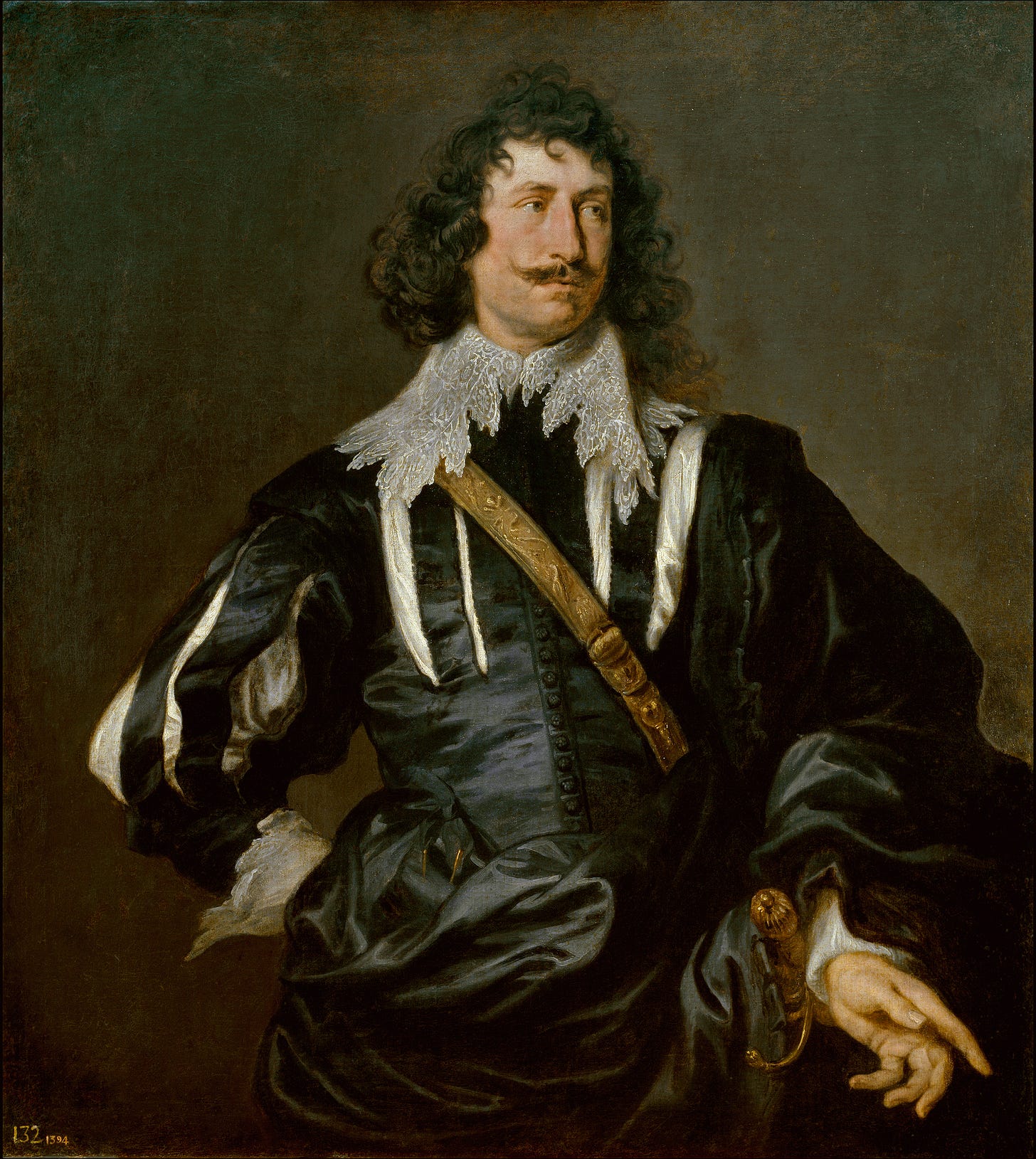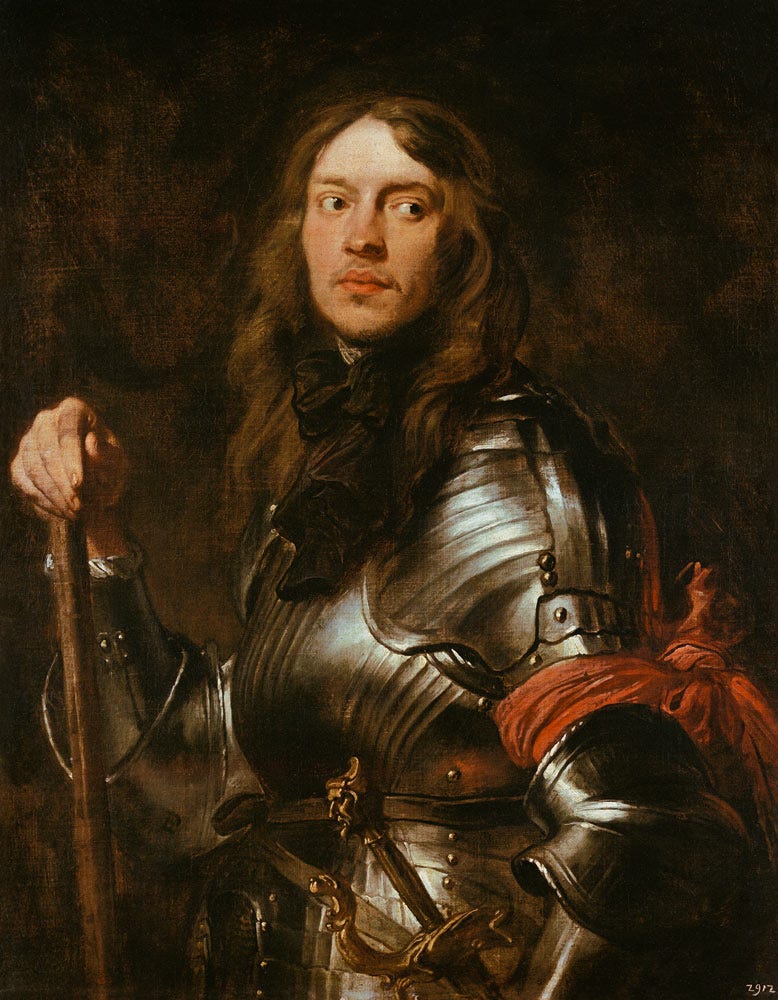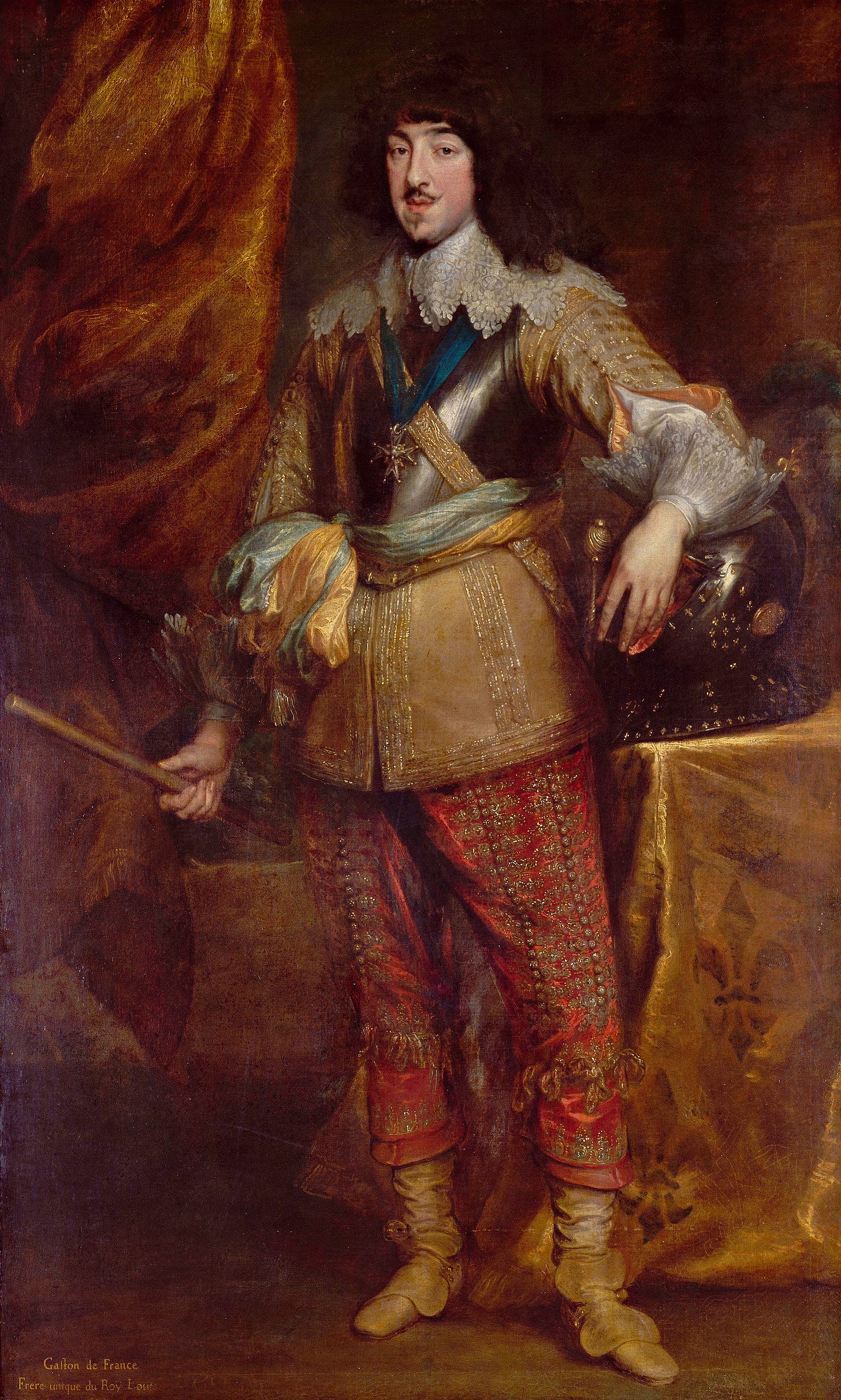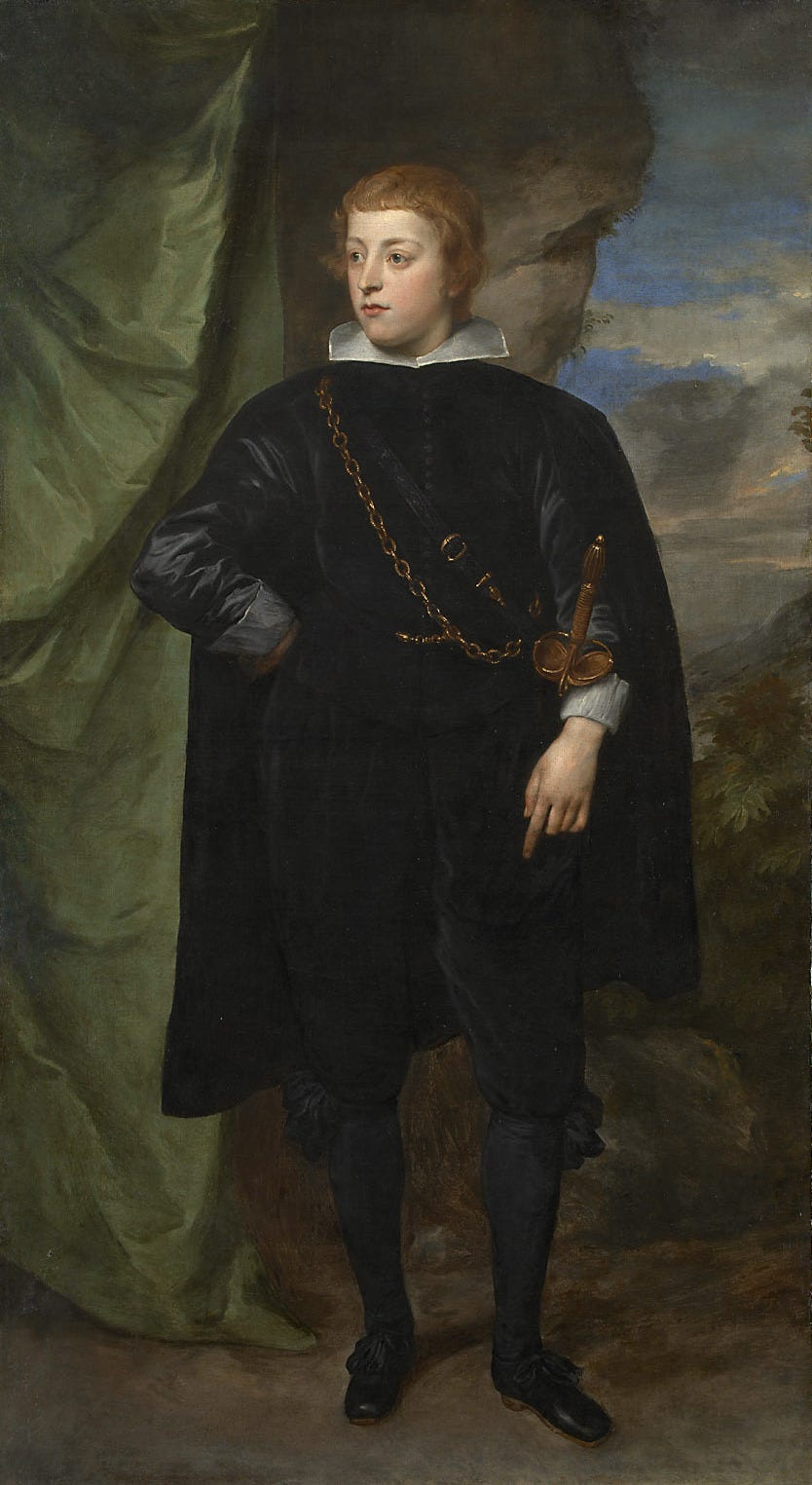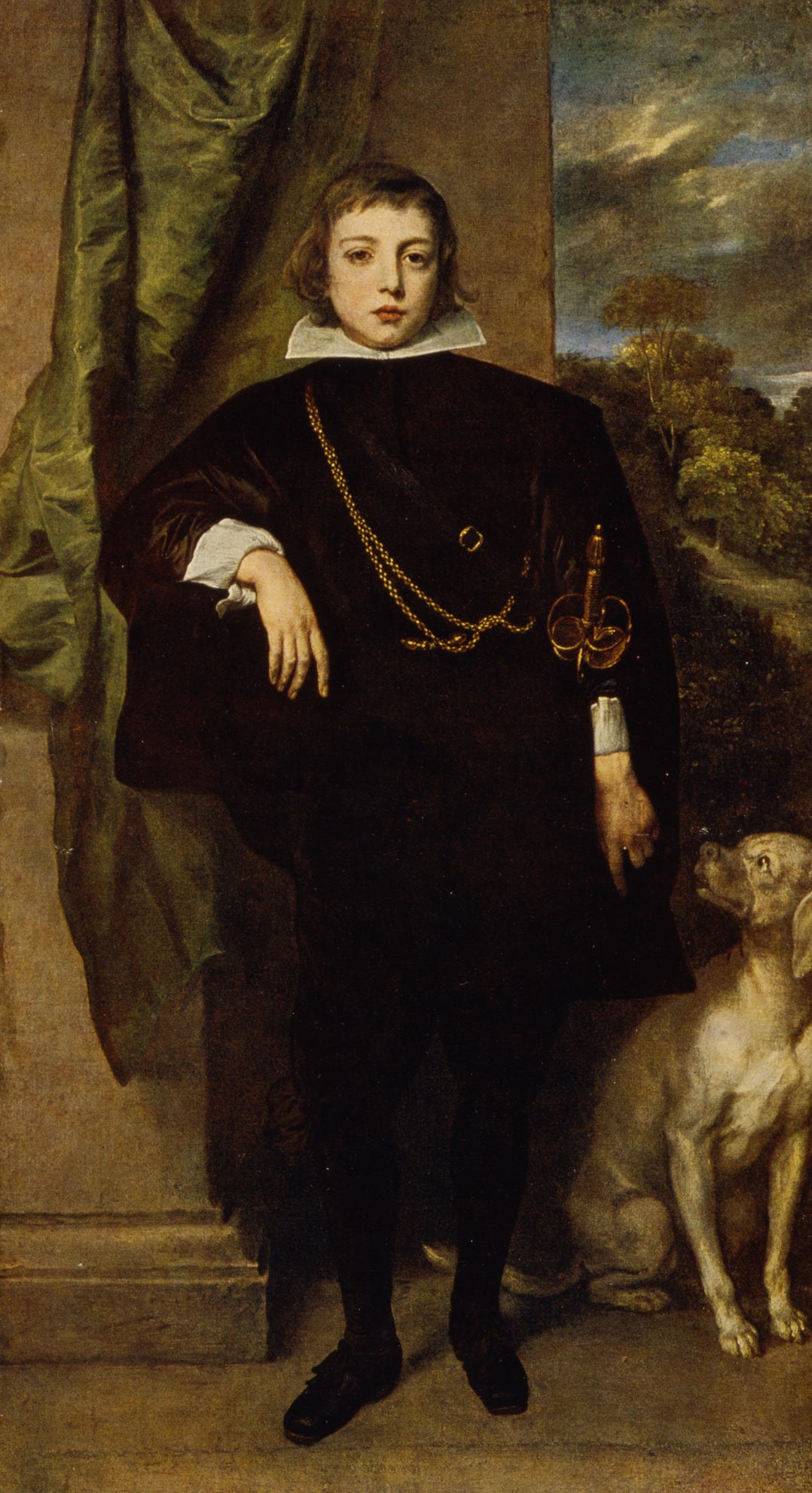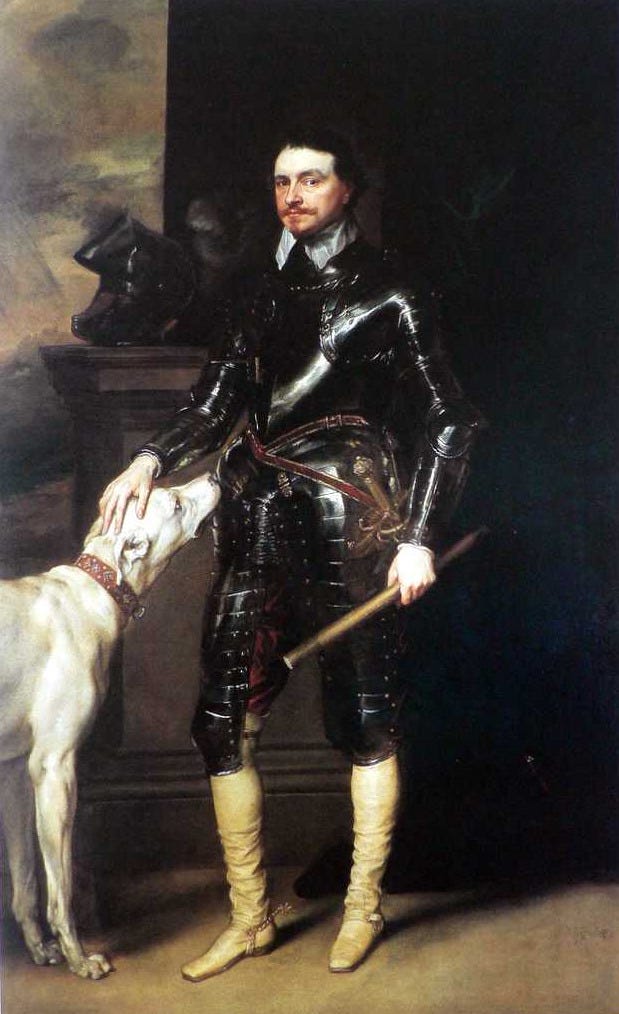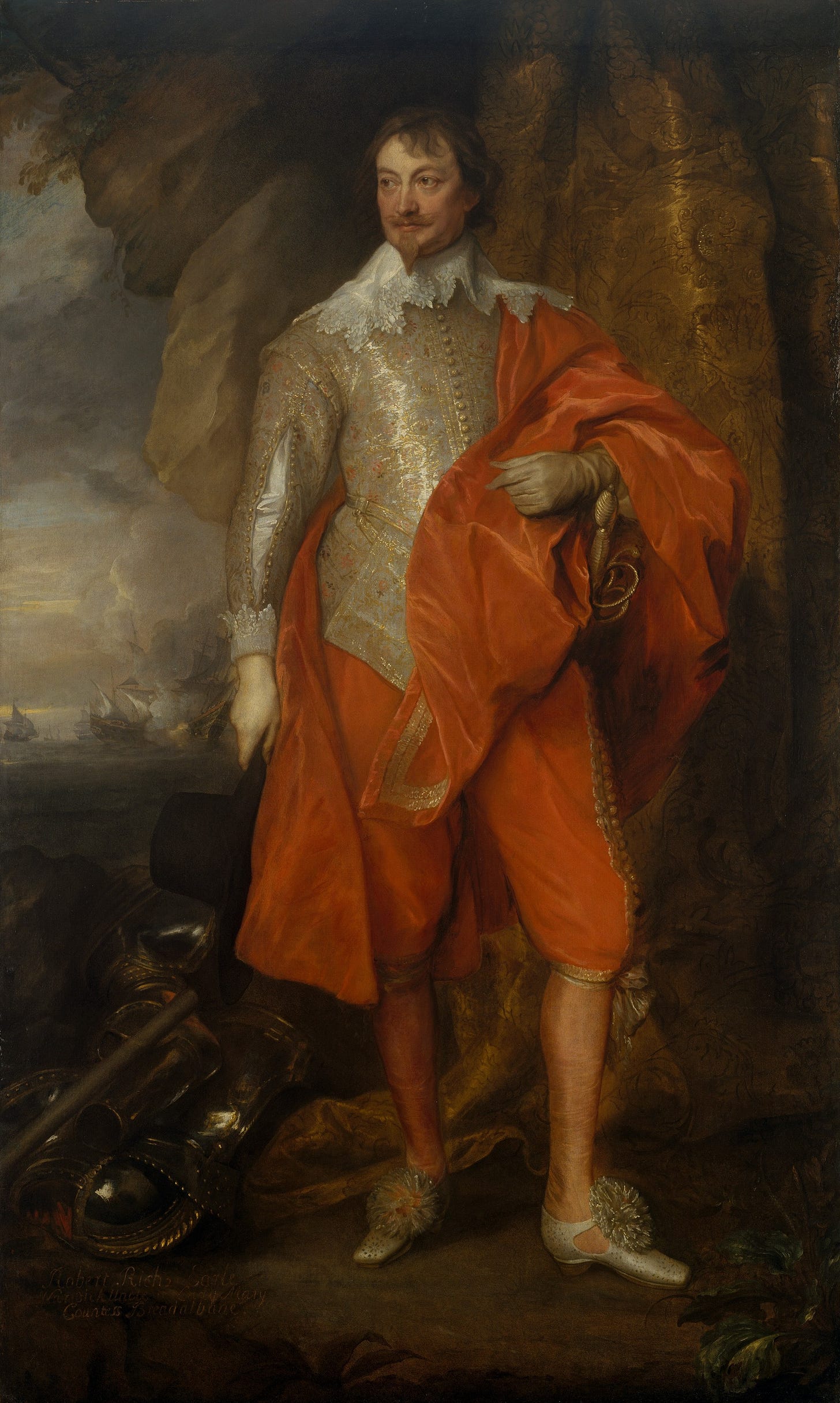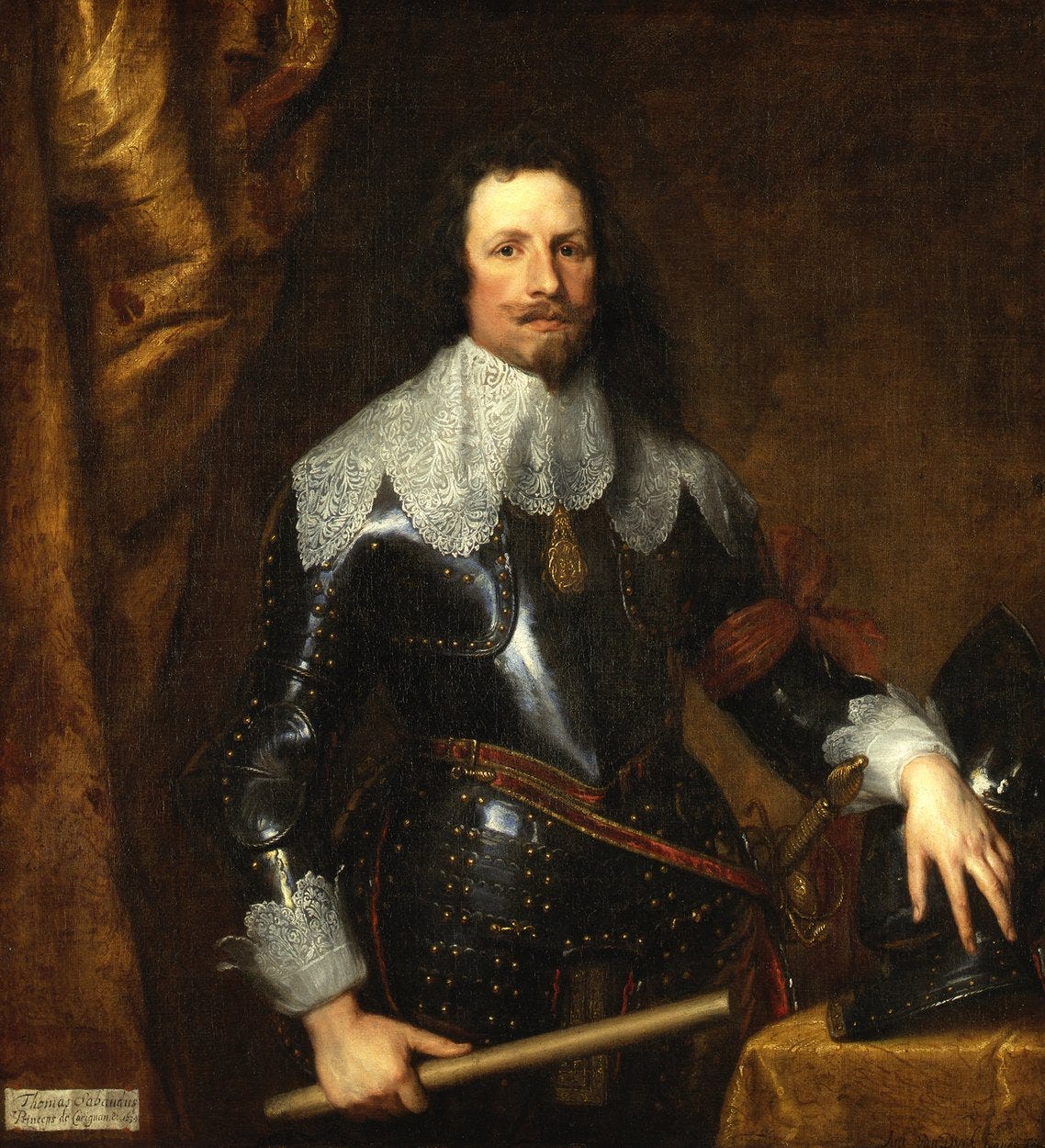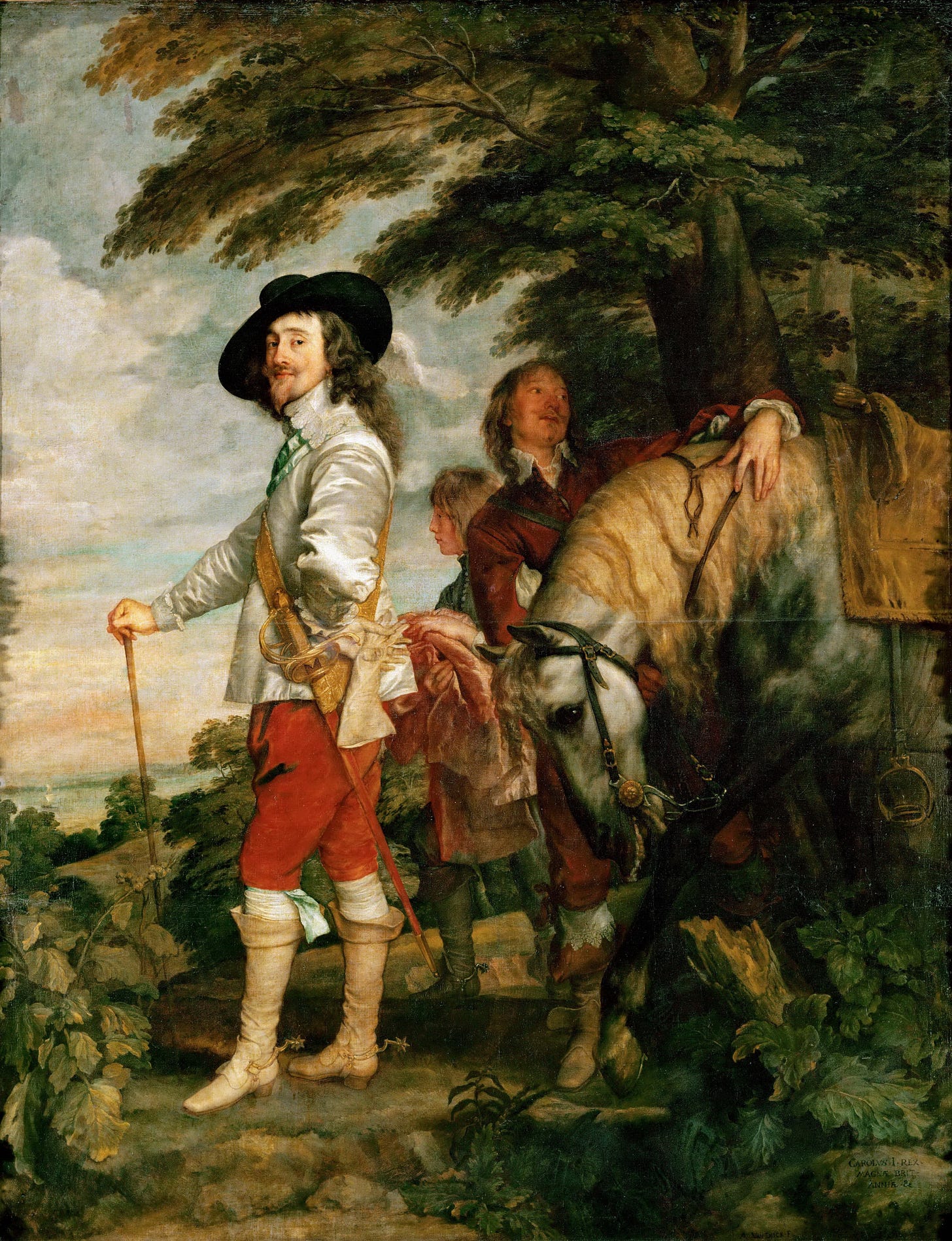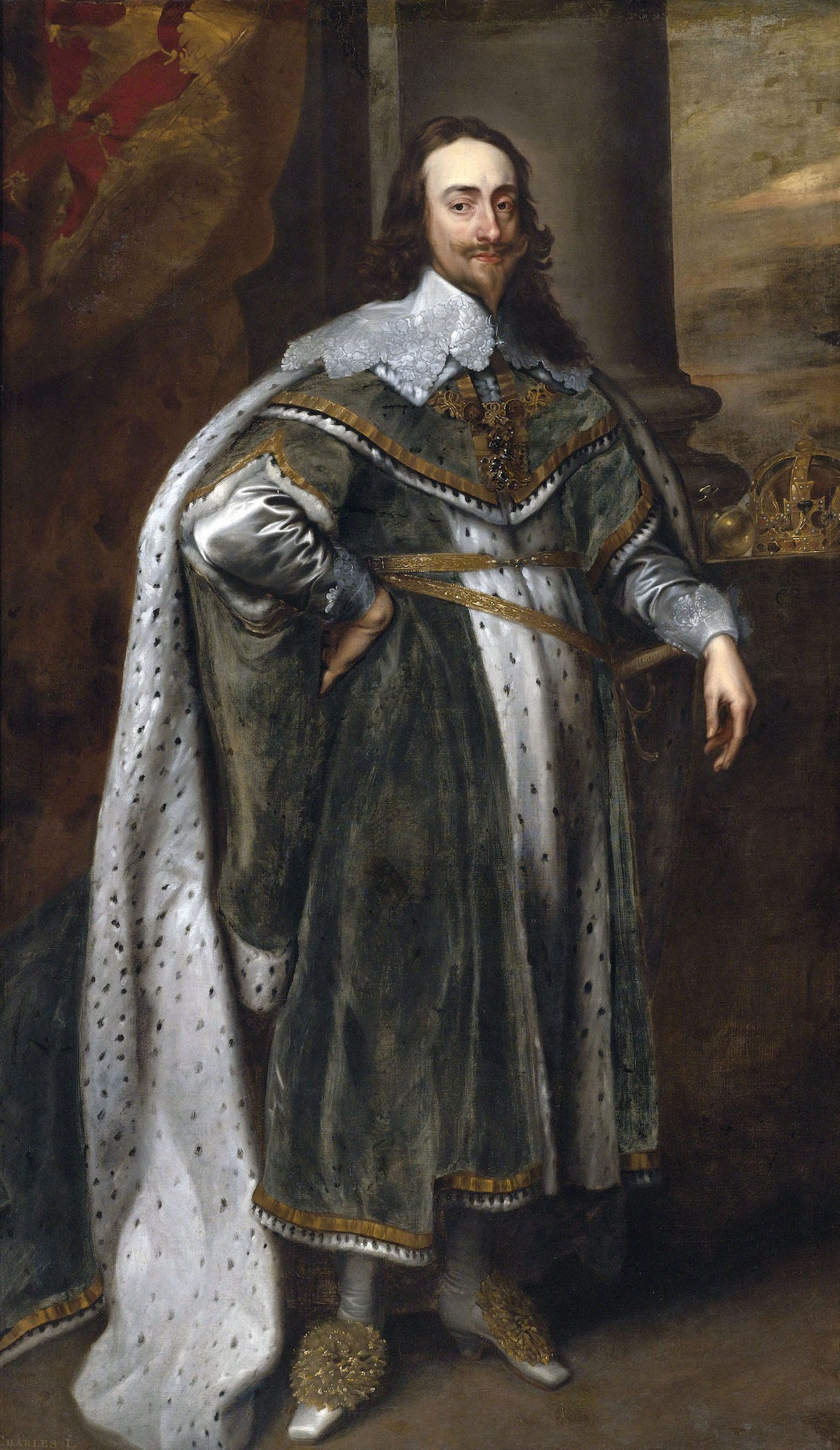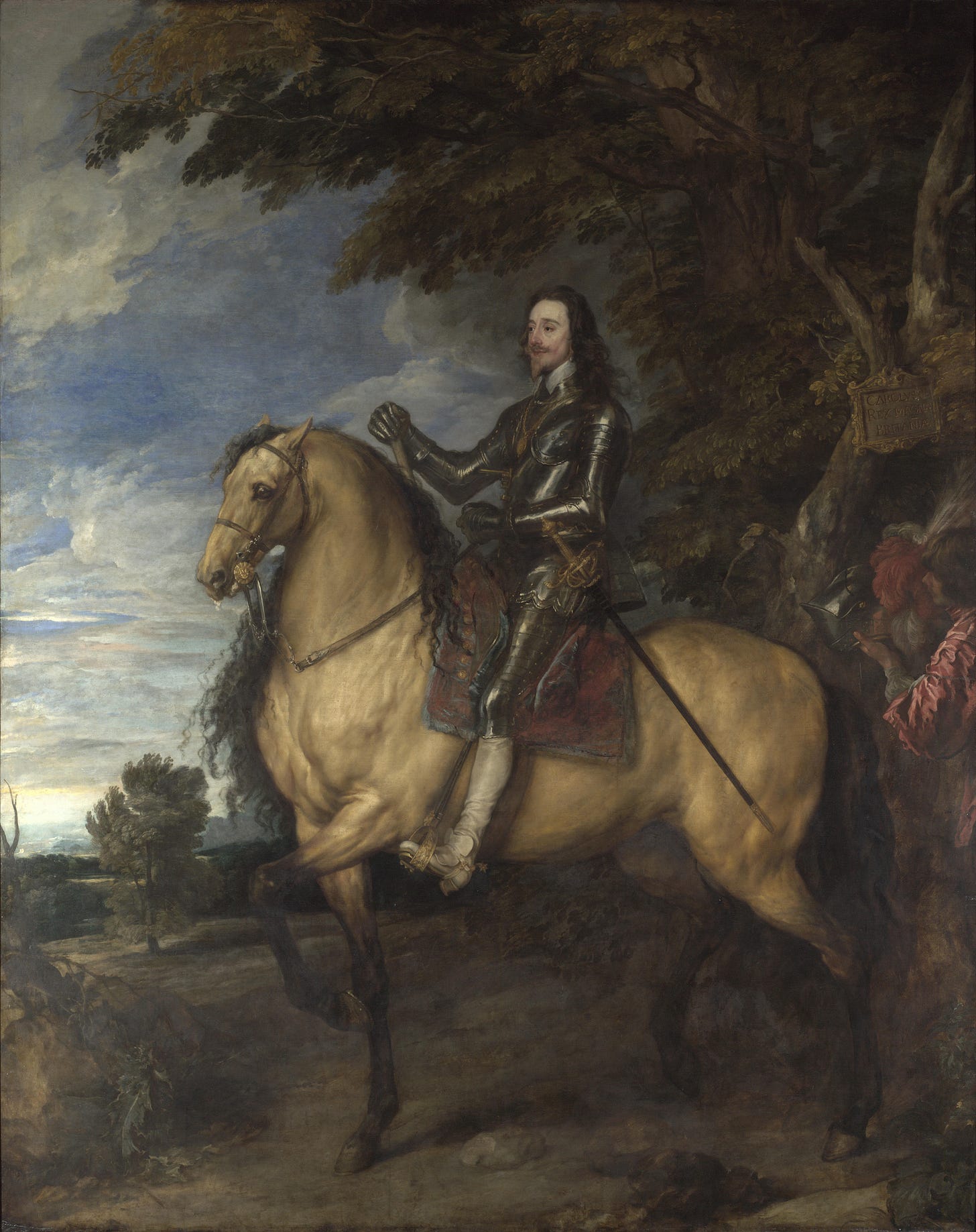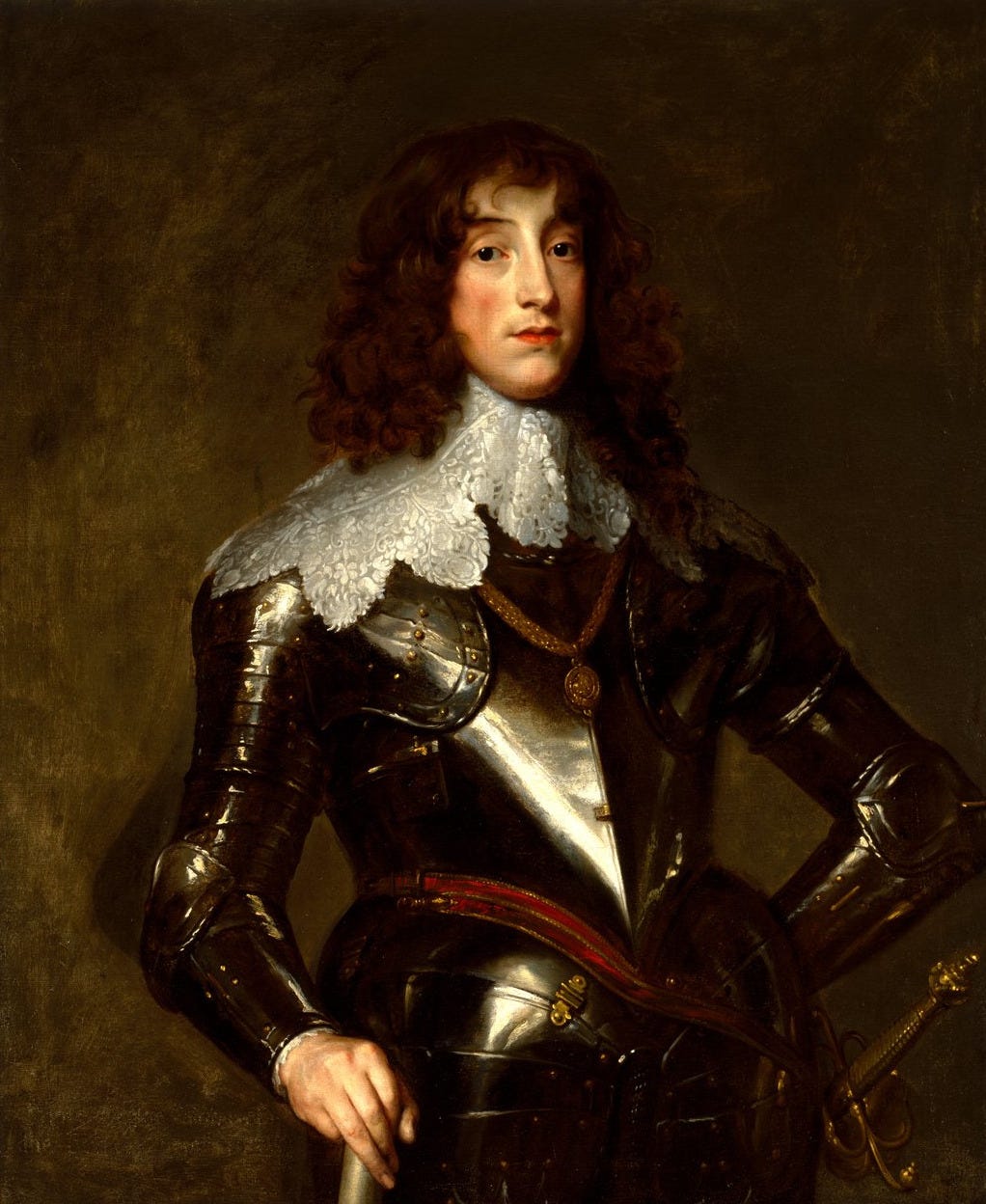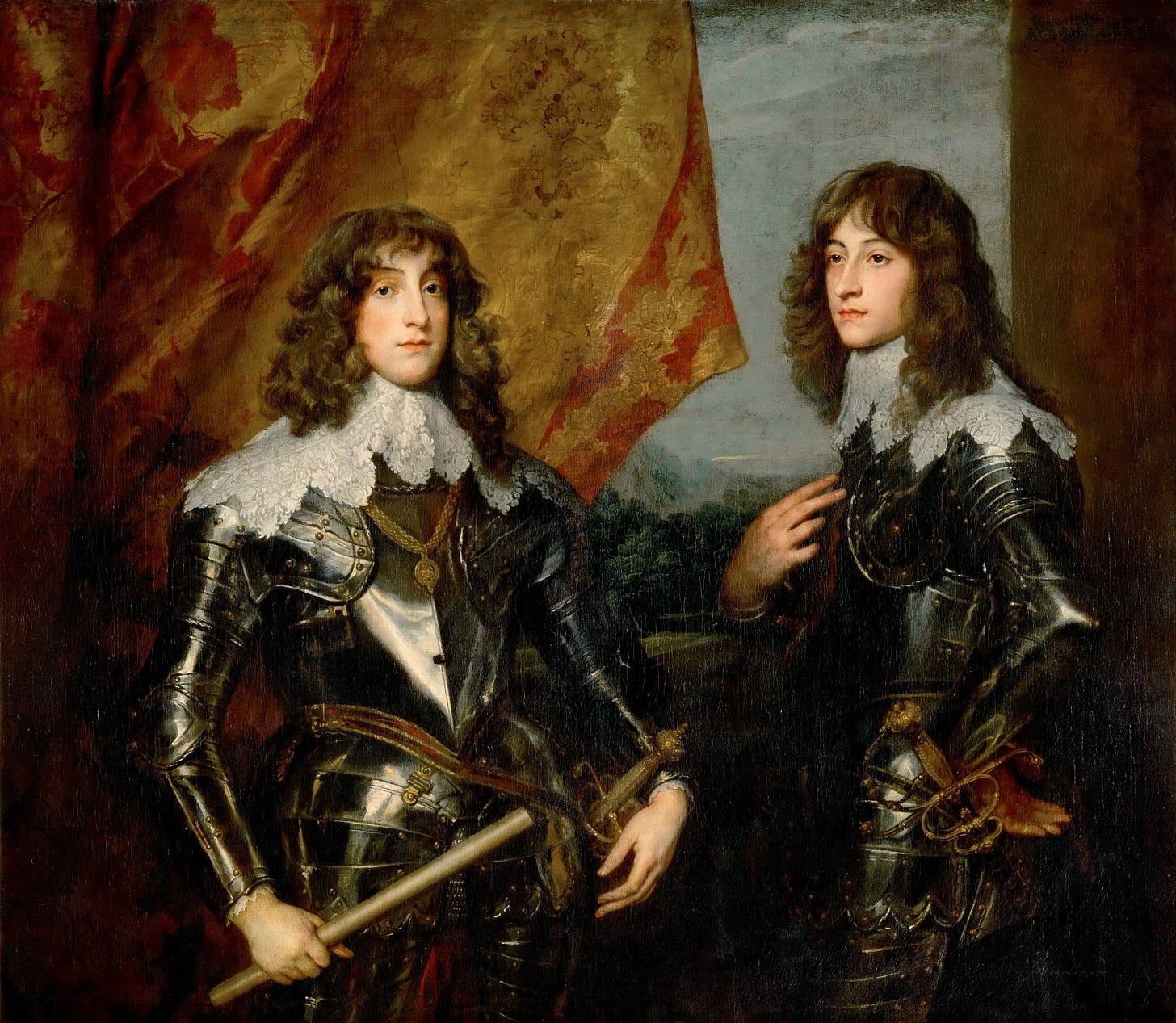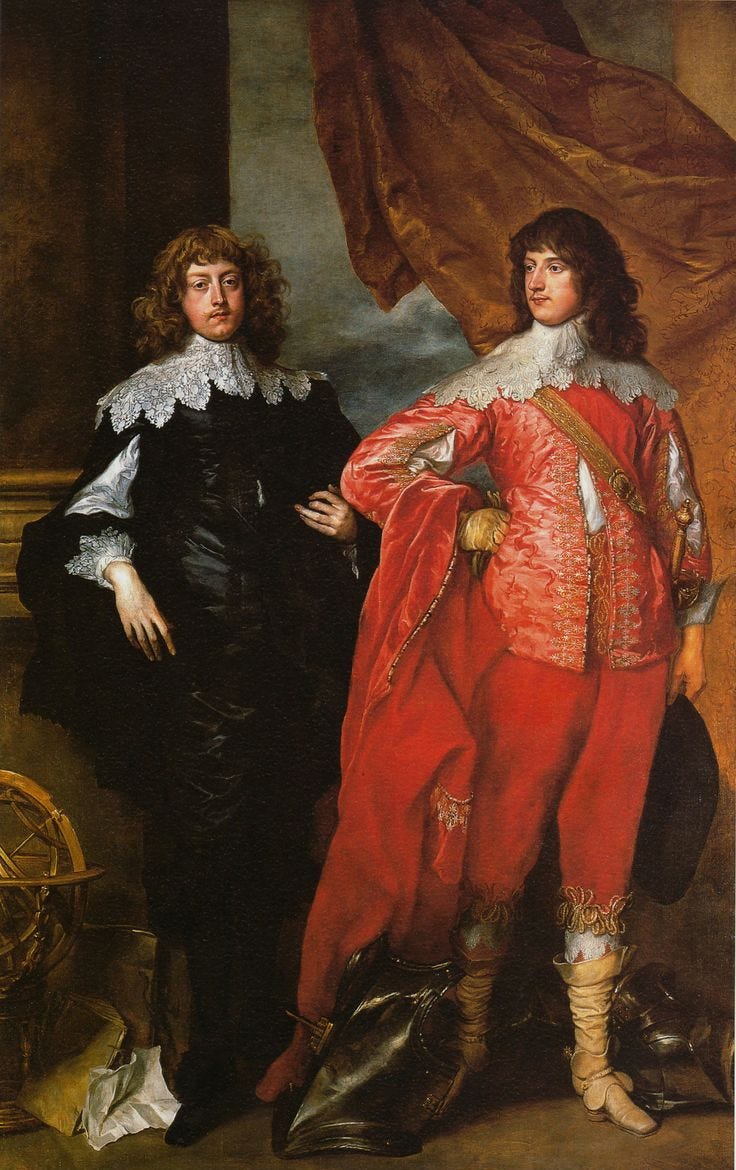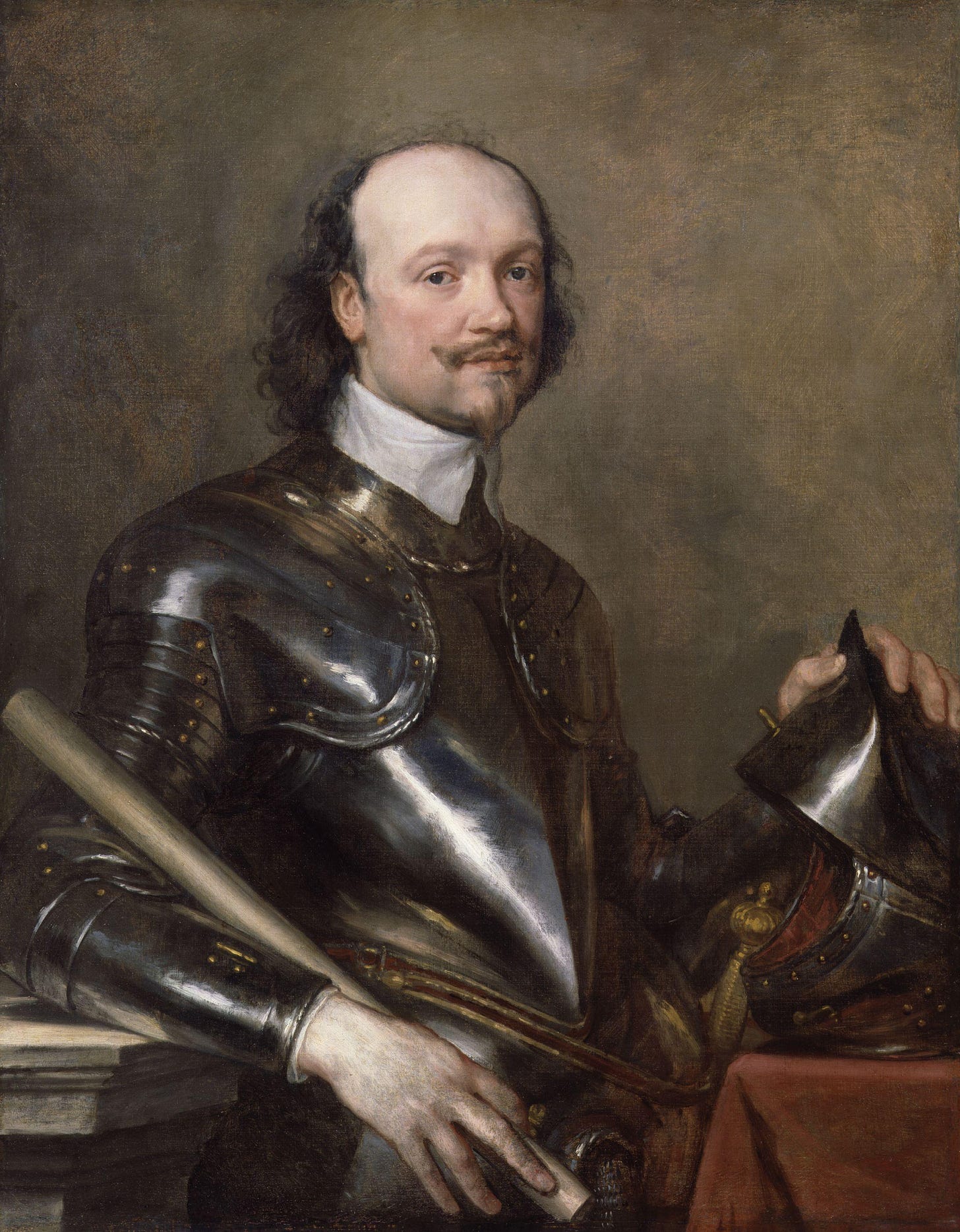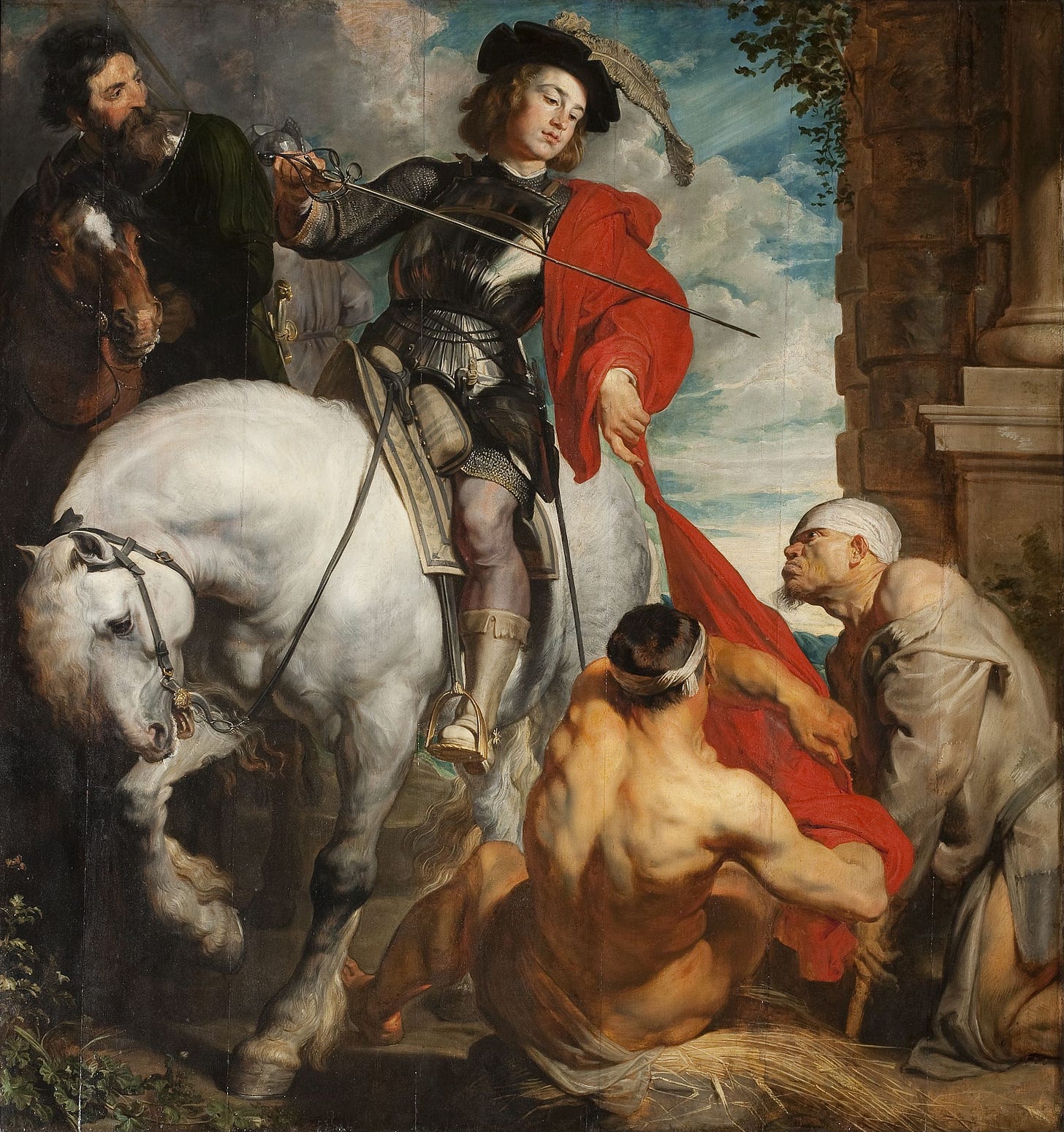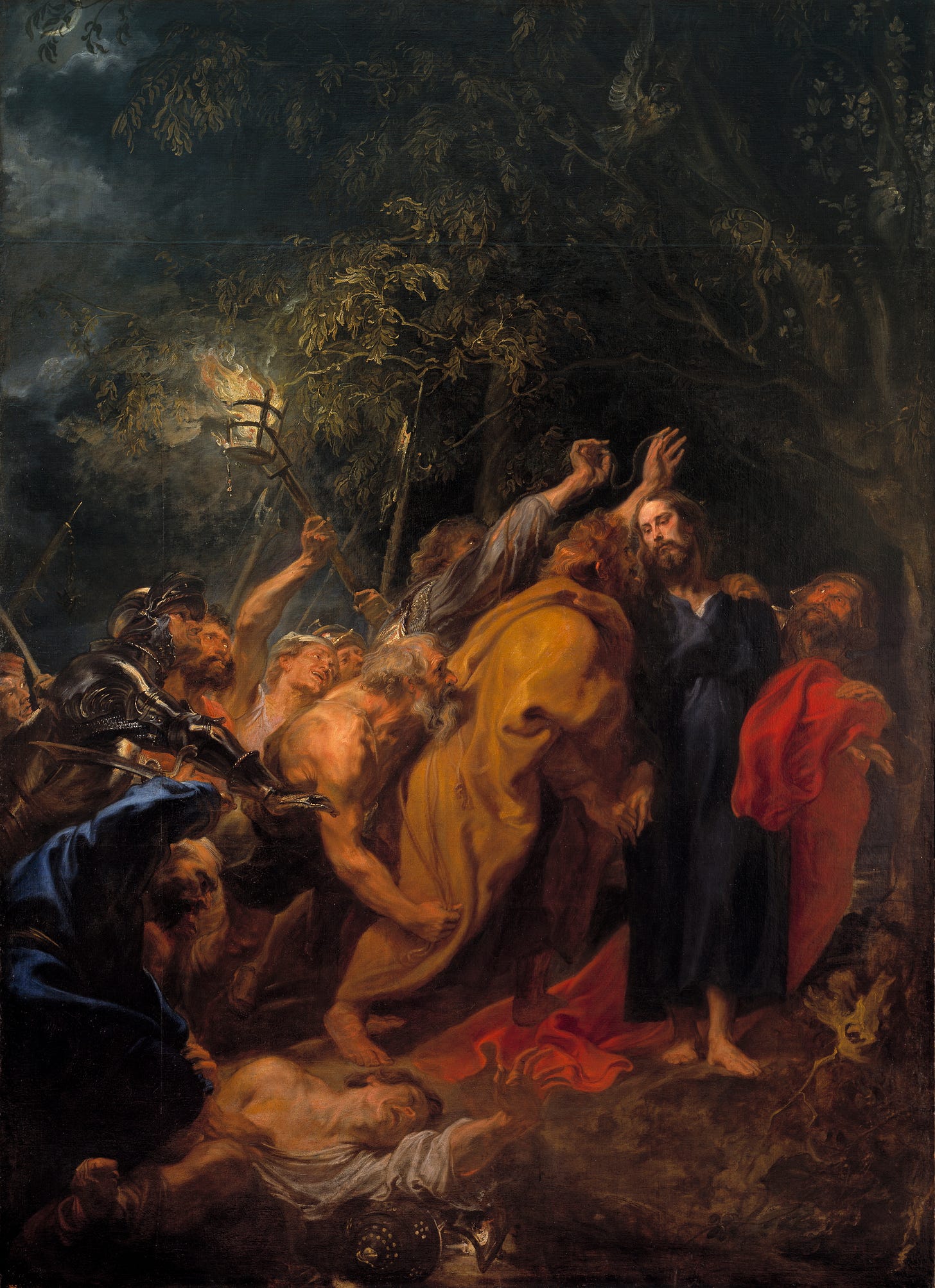Anthony van Dyck (22 March 1599 – 9 December 1641) was a Flemish Baroque artist who became the leading court painter in England after success in the Spanish Netherlands and Italy. As a painter for the aristocracy and various royals, he has captured numerous rapier swords in his portrait work. We will have a look at them.
Portrait of Emanuele Filiberto, prince of Savoy, c.1624
Portrait of a man in armour, c.1625–1627
Count Hendrik van den Bergh, c.1627-1632
Portrait of Nicholas Lanier, c.1628
Portrait of Frederick Henry, prince of Orange, c.1628–1629
Portrait of the duke of Arenberg, c.1628–1632
Armour, horseback, rapier, they all went together. This makes sense since, I expect a duke to be well protected by full-plate armour, I don’t expect a duke to walk to battle, nor do I expect him to point with his finger where his troops to attack. A rapier is much better at this. I am joking, this just shows the martial fashion of the period.
Portrait of a Man, c.1628-1632
Portrait of a General Wearing a Red Sash, c.1630–1632
Portrait of Gaston d'Orléans, c.1631
Portrait of Philippe Le Roy, Lord of Ravels, c.1631
Portrait of Prince Charles Louis, c.1631–1632
This is an English style for the hilt, one that makes the most of sense for me on a transitional rapier.
Portrait of Prince Rupert of the Rhine, c.1631–1632
Portrait of Thomas Wentworth, 1st Earl of Strafford, c.1632–1633
Portrait of Robert Rich, 2nd Earl of Warwick, c.1634
Prince Tommaso Francesco of Savoia Carignano in Armour, c.1634
The King Hunting, c.1635–1638
Portrait of Charles I in Royal Robes, c.1636
Portrait of Charles I on Horseback, c.1636
An example of wearing a rapier on horseback, while in armour.
Charles Louis, Elector Palatine, c.1637
Portrait of Prince Charles Louis and Prince Rupert, c.1637
Elegant, without any over-the-top decorations. Quite rare for royalty.
Portrait of George, Lord Digby and William, Lord Russell, c.1637
Portrait of Sir Kenelm Digby in Armour, c.1640
Saint Martin Dividing his Cloak, c.1618–1620
A simple two-ring rapier with an enhanced martial look to it, appropriate for the rendition of a Roman soldier saint.
The Betrayal of Christ, c.1620
Some Thoughts
In this period, the preferred swords by the side are rapiers. We don’t see as many knuckle bows on them as I expected, and there appears to be a predilection for high-station men to use a simpler hilt in this regard. We also see children with rapiers, so in addition to other considerations, this may also be a factor in finding rapiers with much shorter blades than indicated by fencing logic. Last, I find it interesting that in the depictions of biblical scenes, we see a falchion, even if the quillons do show a period design, and that this tradition in art it maintained since medieval times. All in all, beautiful renditions of rapiers. Some of the best.
